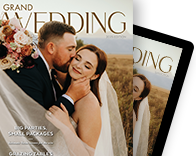Captured on Canvas
Captured on Canvas
Live art joins the wedding party
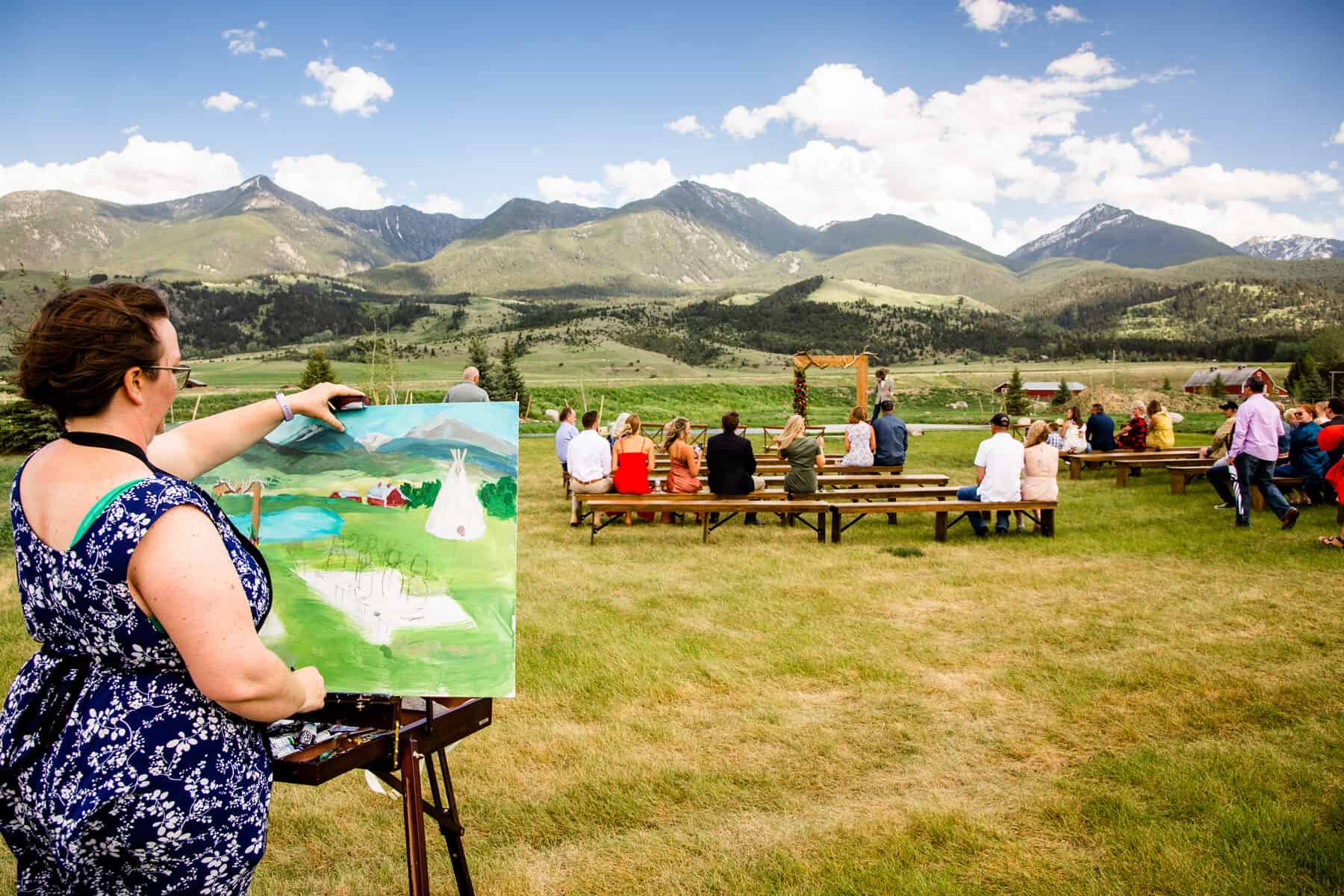
Move over photo booths, live paintings are the new gig in town. As couples yearn for a more intimate wedding day experience, this must-have inclusion is taking precedence over other important additions. Now, hiring a professional artist to create an on-site family heirloom is not just a trend of the times, it’s a cherished wedding day memory that adds a flavor of sophistication to day-of festivities.
We caught up with professional painter Kay Potter, of Livingston, Montana, in order to fully understand why live wedding painting is now a thing in mountain towns, and to get a quick rundown on the specifics of what this type of commission entails.
“A friend of mine asked me to paint her wedding four years ago as an offshoot, one-time thing,” says Potter. “I had this realization that this is something I really love—I like artwork that serves people. I also like that it involves interacting with others, as creating artwork can be lonely.”
Why choose an artist to paint your wedding?
Hiring a live wedding painter is not a substitution for a photographer—most people choose both. But unlike photography, a single painting depicts a feeling of timelessness and can capture details that photographs sometimes cannot. This is especially true with mountain venues, where the landscape itself is both captivating and wild. Artists can work off of real-time happenings in nature—say a moose wanders into the reception area, or a flock of sandhill cranes flies by—to create memories that are hard to capture timely on film.
“At a wedding in Jackson at the Snake River Ranch, the couple incorporated a butterfly release into the ceremony,” says Potter. “I was able to capture it on my iPad, and then, later on, add it to their scene.”
Potter explains that there is a real magic to seeing yourself in a painting, as well. “It’s a monumental way to celebrate the love you share by putting it into fine art,” she says.
And, truth be told, some brides simply like being depicted in paint strokes, as it’s only natural to criticize the way we look in photos. “It frees [brides] from the sense of, ‘Oh, I wish I looked a little different in this photo,’” Potter says. “It takes a level of stress out of the final product, because, unless your mole is Cindy Crawford’s mole, I’m probably not going to include it.”
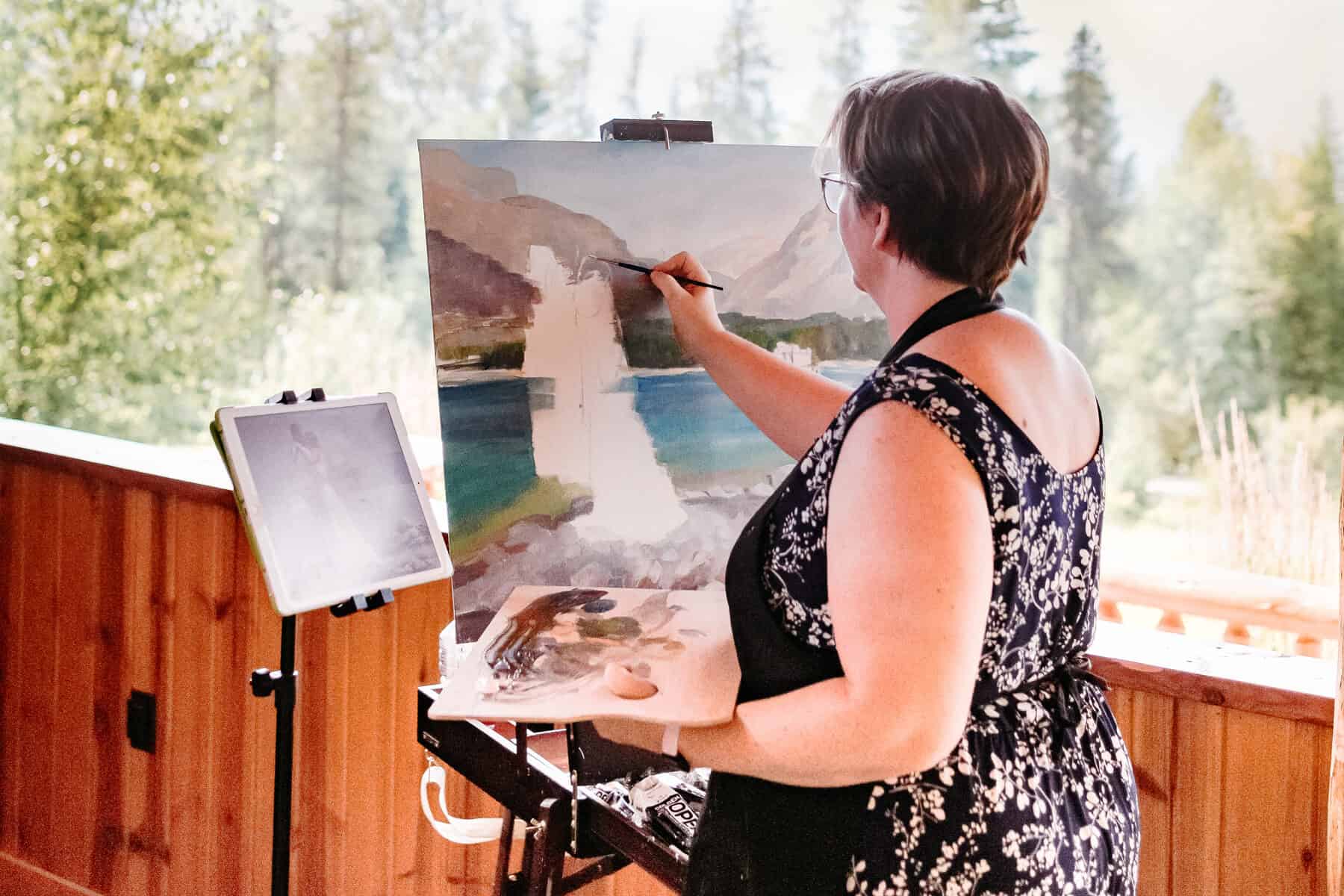
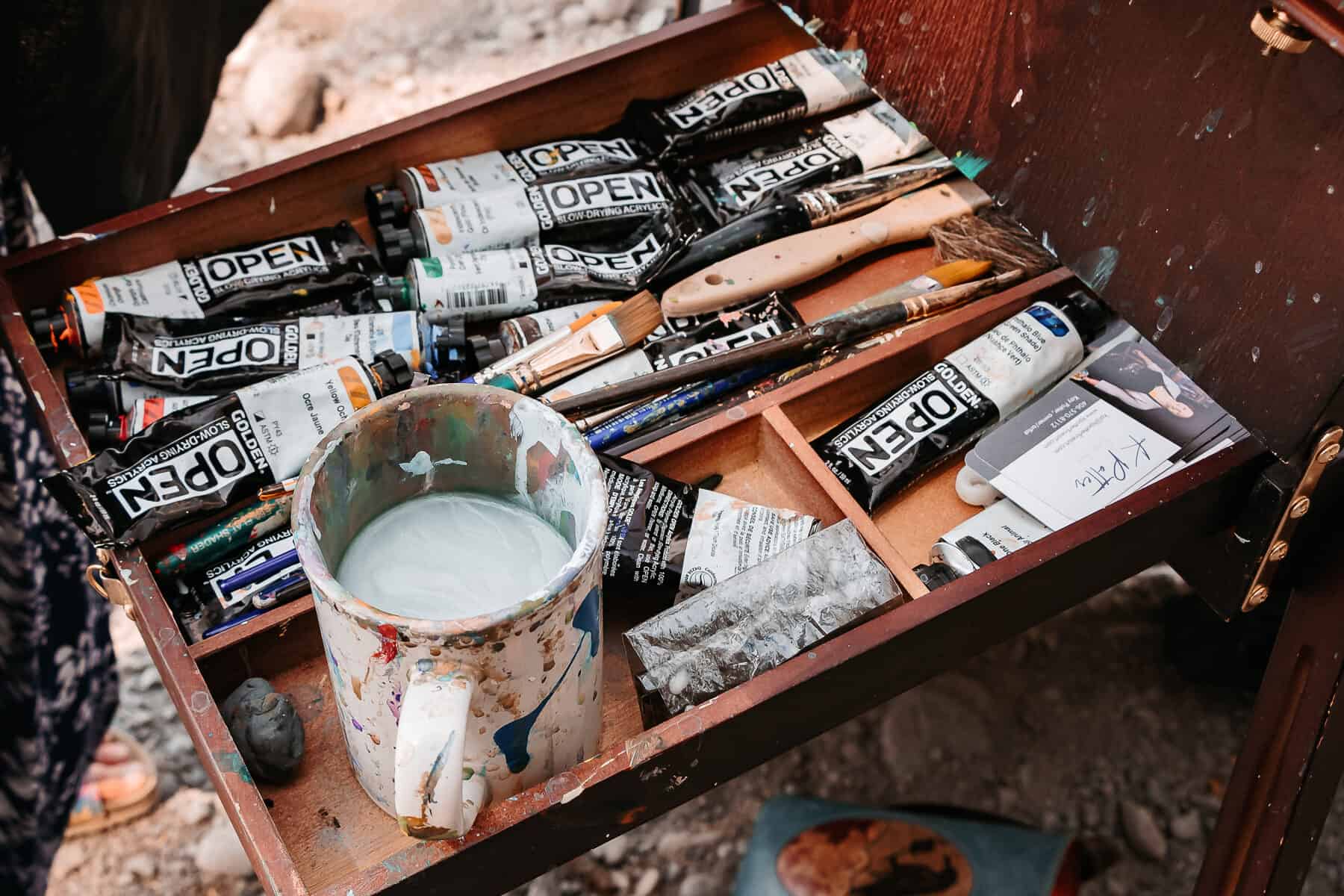
How does the process work?
Once hired, Potter arranges a meeting with the bride and groom to discuss their specific goal for the finished piece of art. She explains that some couples want the painting to be of just themselves, others want to include family members, and some want the capture to focus more on the location and the landscape. She urges couples to “chat her ear off before the wedding,” and then she does a check-in a month before the event to get “a final and really fresh vision.”
Next, Potter shows up two hours before the ceremony, sets up her easel and her 3-foot by 2-foot canvas and begins background painting in typical plein air fashion. That way, when guests arrive, they can see the painting in progress, which adds to the overall vibe of the festivities. Next, as things proceed, Potter captures images on her iPad—perhaps, the ceremony scene, the first kiss, the procession. … She uses these photos to act as the framework for the rest of the painting. Then, during the reception, Potter gets to work.
“It’s a form of entertainment. Guests come up and check out the progress. They love to talk to me and ask questions like, ‘How did you get that done in only a few hours?’” she says. “It makes art accessible to everyone.”
But the final project is not yet complete as the last of the guests leave the dance floor. Potter takes the painting home to adjust the final details and to varnish it. Often, she refers back to her photos to add in family members or other features not included on the spot.
“The cool thing about painting is that you can morph reality,” says Potter. “I attended a wedding in Glacier National Park, and the couple wanted the background to be of Lake McDonald. So, I stood on the shore of the lake and painted the background. Then, I took a photo of their first kiss, and painted them within the background.” She explains that the couple actually got married on a boat (not everyone could attend), so, instead, she placed the boat in the water behind them.
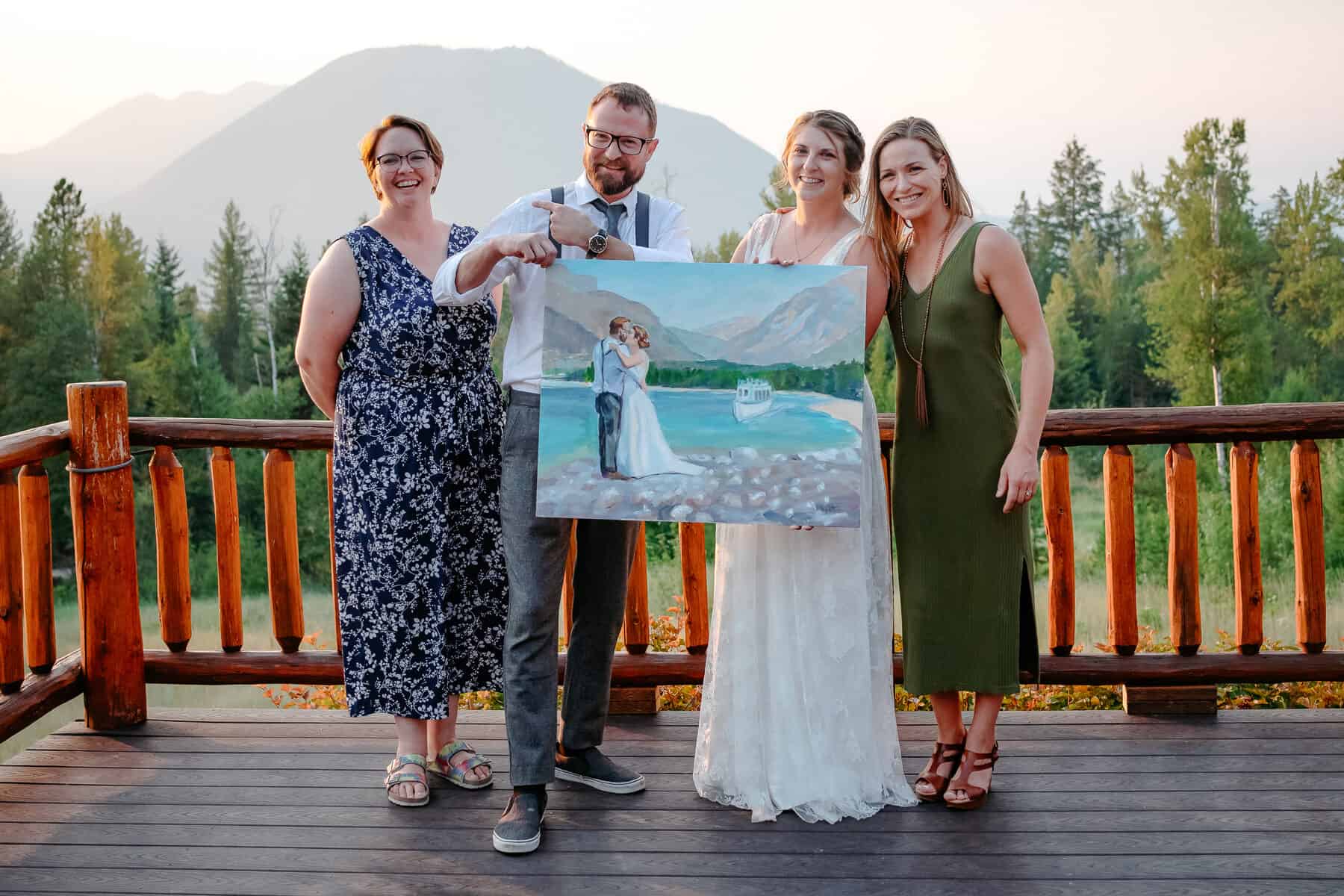
How do you interact with a live painter?
Potter gives the following advice to the bride and groom: “The day of, don’t even think about me. You do your thing, and I’ll do mine,” she says, noting that she requests each couple give her a contact person for anything that may come up, and sometimes the contact is a person from the venue.
As for the guests, Potter advises them to check in often to see the work in progress. You can gain the full experience by seeing what she starts with, how the painting progresses, and then how it ends. She likes people to engage her in conversation, too, and to ask questions while watching her work, as it’s one of the most special parts of the process. This is often a wedding highlight that guests go home and talk about after the festivities are over.
“It makes [the experience] really interactive, and that’s the part I’m there for,” says Potter. “I’m out here painting with you guys.”
Potter likes the fact that most regional weddings are held outside, lending to her specific style of landscape painting. She also likes the western motif details used in these parts—like cowboy hats and cow skulls—as they enhance the appeal of the end product and formulate a sense of place. There is a similar feeling that out-of-town guests remember and take home with them, and couples cherish, as they look back on their piece of fine art and remember the love that was shared beneath an unforgettable landscape.
